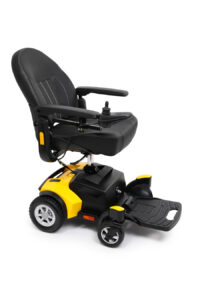Over the course of the past decade or so, there has been significant progress made in the field of battery technology. However, there has not been so much progress achieved with regard to the guidance that has been provided regarding the maintenance of electric wheelchair batteries. Consequently, this has resulted in a succession of directions that are not only unclear but also frequently conflicting regarding the "best" manner to take care of batteries. We will dispel some of these myths and legends in this article, and we will also provide you with five recommendations that you should adhere to. Due to the fact that we do not make extensive use of the chairs while we are confined, it is imperative that we take suitable care of the batteries in order to prevent them from being damaged as a result of underutilization.
You should look at your wheelchair's batteries
When compared to the batteries that are used in cars, for instance, the batteries that are utilised in mobility devices are rather different. The batteries that are used in mobility goods like electric wheelchairs, which are generally referred to as long-lasting cycle batteries, release energy in a consistent manner over an extended length of time. On the other hand, the batteries that are used in cars are designed to release a significant amount of energy in a short amount of time.
Batteries that are "maintenance-free" are the only ones used in certain wheelchairs

5 crucial suggestions for battery care during confinement:
Recharge the batteries of your electric wheelchair every night, regardless of how much you have used it and even if you haven't used it at all throughout that day. This is one of the most important maintenance tips for your battery.
This charging cycle should never be interrupted. Hold off on beginning the process of a full recharge until nighttime. This is something that you should keep in mind because, as a general rule, the Mobility aid guidance document iata-guidance-on-the-transport-of-mobility-aids-final-feb2023maintenance-free batteries that are used in our chairs require more time to fully recharge than the acid led batteries that are used in other goods.
You should leave the chair plugged into the charger until you are ready to use it. This is the best course of action if you are not intending to use the chair anyway. In the event that the charger is connected to the power supply, this will not cause any damage to the batteries. It is possible for the batteries to run out of power if the charger is not connected to the power source.
If you are only using your electric wheelchair to go outside and you are not using it during these days of confinement for more than 15 days, you should detach the cord that links both batteries. This is because the electric wheelchair is only ever used for going outside. At a minimum of once per week, you should ensure that the batteries are fully charged.
It is important that you check the battery terminals on a regular basis to inspect for any signs of corrosion. In the event that there is corrosion, the terminals should be thoroughly cleaned (a wire brush is an excellent tool for this cleaning), and then the terminal should be re-greased with petroleum jelly or similar. Take the necessary precautions to ensure that the wire, the wire clip, the terminal nuts and screws, and the wire are completely covered in petroleum jelly to protect the contacts.
Other hot tips for electric wheelchair users
Additional fundamental advice that you must not overlook. Instead of pulling on the wire, you should pull on the connector when you detach the charger. In addition to ensuring that the cable is not subject to any kind of damage or tension, you should also make sure that it is positioned in such a way that it is not tripped over or stepped on by anyone.
Try to avoid extension cords when charging. It is possible to start a fire or induce an electric shock by using an extension cord that is not acceptable. If you have no other option but to use an extension cord, you should make certain that the extension cord is properly connected and that it is in good electrical condition.
If you found this article to be interesting, you should also read our post about the maintenance of a manual wheelchair. In this article, you will discover some fundamental advice for the daily care of your manual wheelchair, as well as all the specifics regarding which parts you should check when you should check them more regularly.
An electrolyte conveyance technique that is generally referred to as "gel" is utilised by these batteries. This gel is completely contained within the outer shell of the battery. Aside from the fact that it needs to be recharged on a regular basis, there is no maintenance that is necessary.
Try these wheelchair travel guides for further information
IATA battery powered wheelchair guide
IATA Guidance on the transport of mobility aids
Acid cannot be spilled because the battery lid is sealed, and as a result, it may be transported in complete safety, even on an aeroplane if the batteries are approved by the International Air Transport Association (IATA). Please make sure that the battery for each individual chair is approved by the International Air Transport Association (IATA) before bringing it on planes, as this does not apply to each and every chair.
